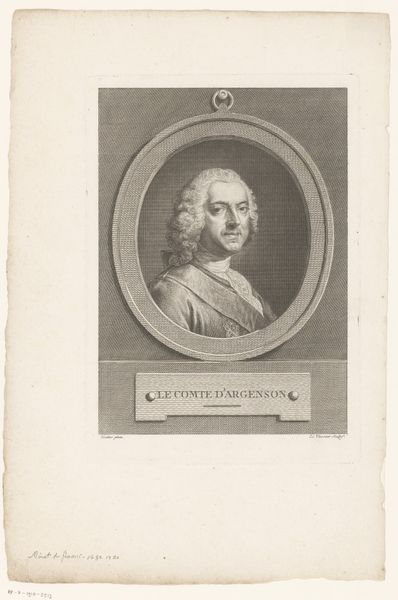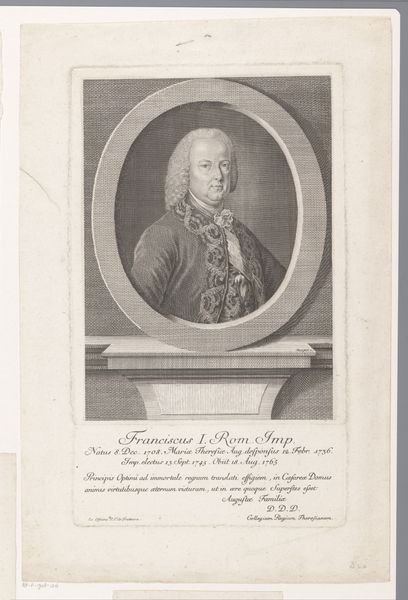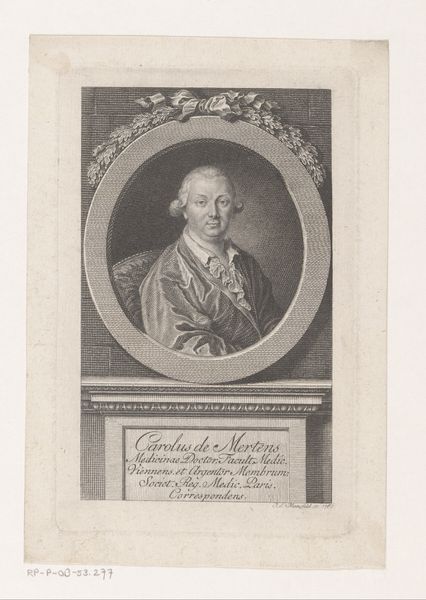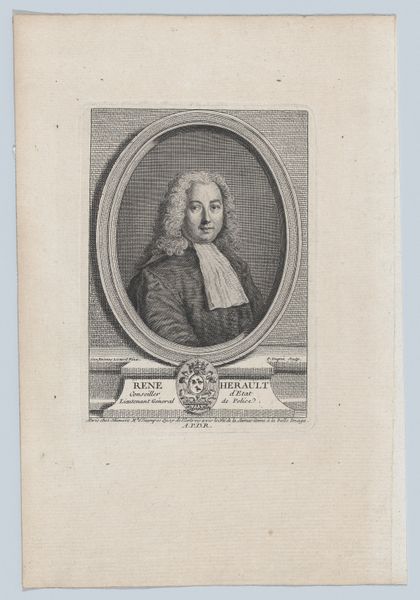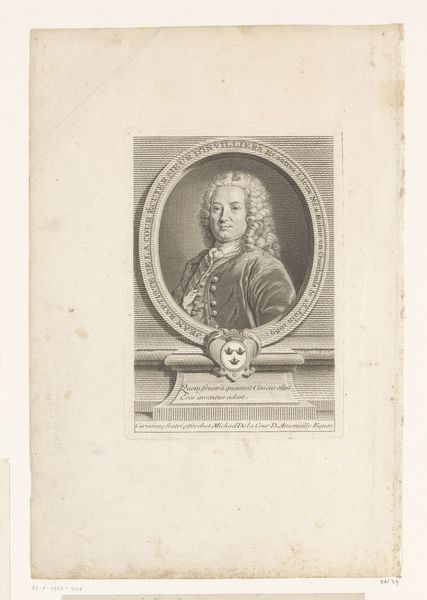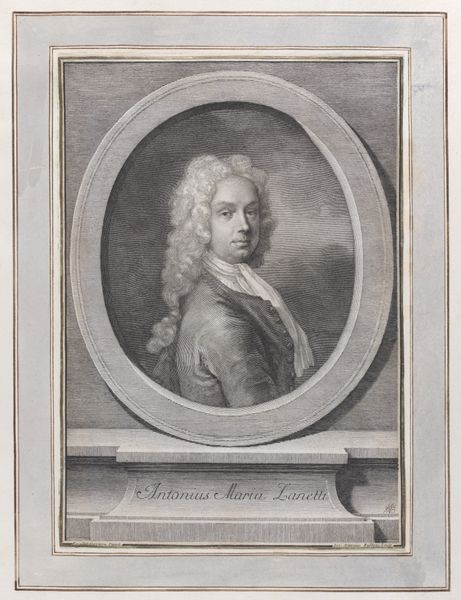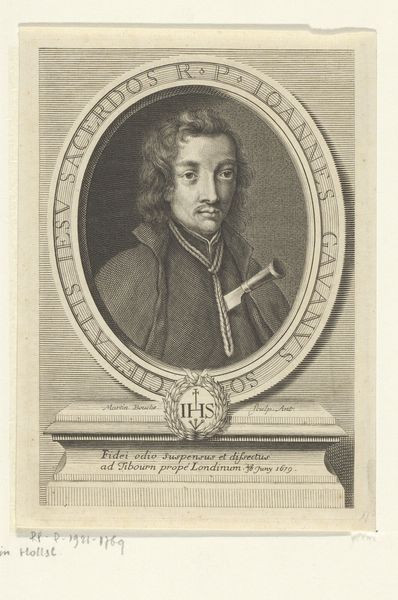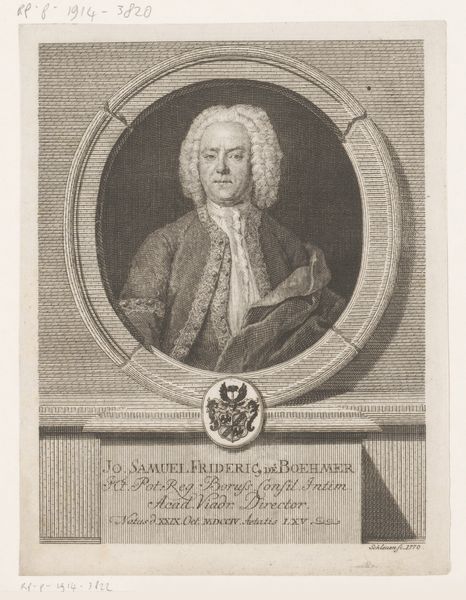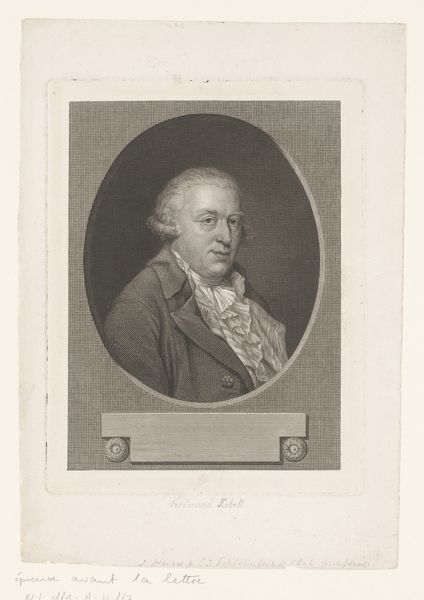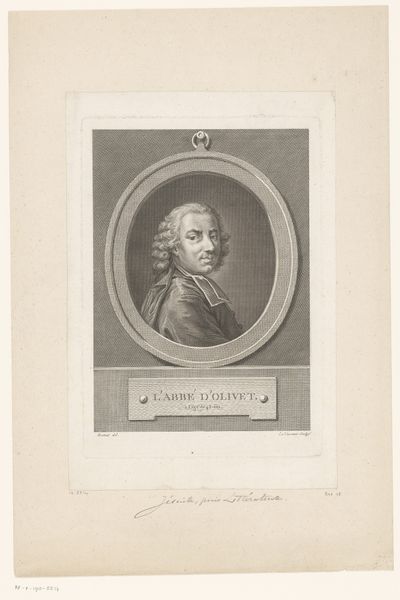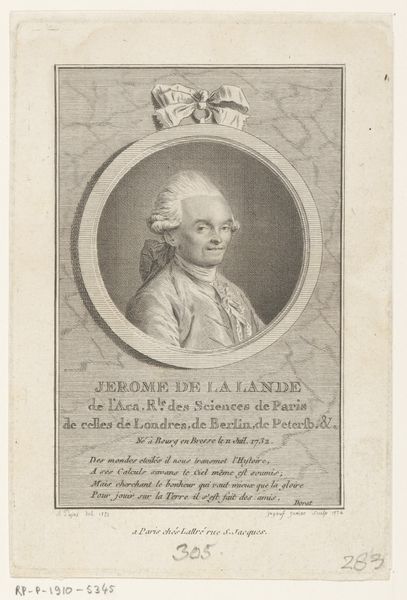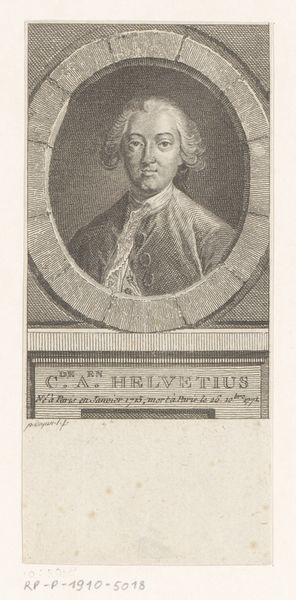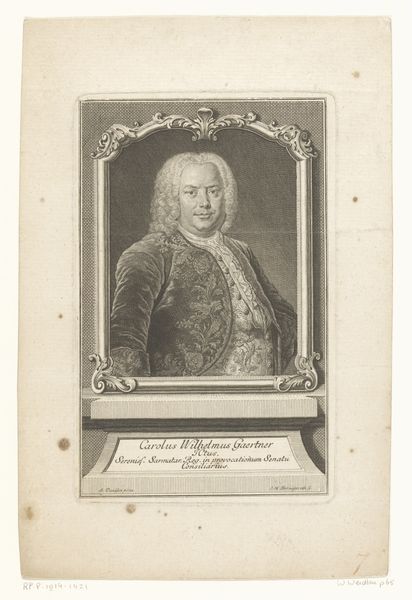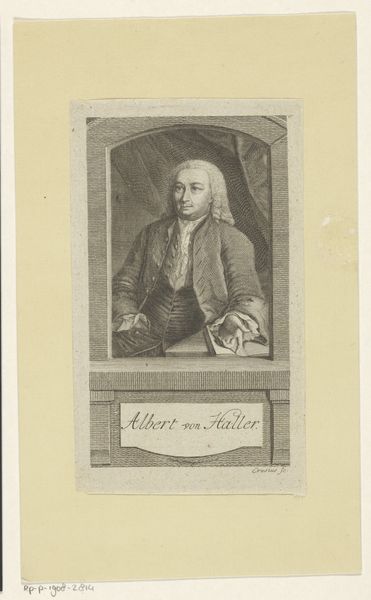
Portrait of Claude Adrien Helvétius (1715-1771) 1772
0:00
0:00
drawing, print, engraving
#
portrait
#
drawing
#
neoclacissism
# print
#
engraving
Dimensions: Sheet: 9 1/4 × 7 1/16 in. (23.5 × 18 cm)
Copyright: Public Domain
Editor: Here we have Augustin de Saint-Aubin’s “Portrait of Claude Adrien Helvétius,” an engraving from 1772. I’m immediately struck by the contrasting textures; the smooth face versus the detailed, almost architectural framework. What do you see in terms of formal qualities? Curator: I observe a deliberate engagement with line and form. Consider how the rigid geometry of the inscribed plaque supporting the sitter's name interacts with the ovoid frame. This creates a visual tension between rectilinear and curvilinear elements, setting up a compositional dialogue. Do you notice the implications in the balance and visual hierarchy? Editor: It seems the oval draws my eye to the face, definitely creating a hierarchy. The balance feels very formal and structured. What about the treatment of light? Curator: Light, achieved through skillful manipulation of the engraving technique, models Helvétius' face and differentiates textures. Note the subtle gradations which convey the smoothness of skin, contrasting with the dense, cross-hatched background. It’s a masterful play with light and dark to create depth. How do you perceive the spatial relationships? Editor: The portrait almost feels flattened against the background. The subtle shadings provide the depth, preventing it from feeling *too* flat. The limited tonal range makes it so that depth comes purely from the skill of the engraving, as you noted. Curator: Precisely. The visual syntax speaks volumes about the Neoclassical sensibility: order, clarity, and a controlled aesthetic, devoid of excessive ornamentation. Reflect upon the formal qualities and what we can gather about the intentions. Editor: Looking closely, I see the strategic interplay of lines and forms creates a compelling dialogue, speaking to the intellectual and aesthetic values of the Neoclassical period, a very intentional composition!
Comments
No comments
Be the first to comment and join the conversation on the ultimate creative platform.
